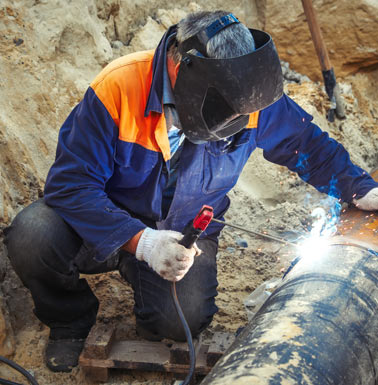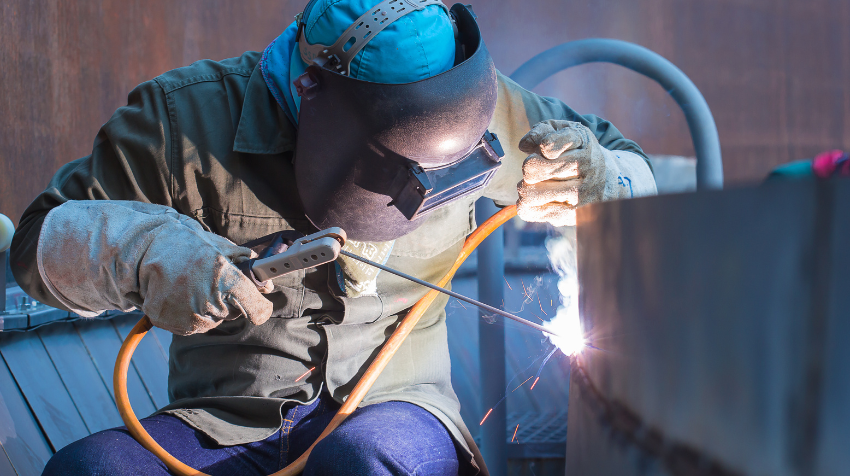Arc welding is a vital process in the realm of metal fabrication. It has seen a remarkable evolution from its inception, adapting to meet the demands of industries and craftsmen alike. This article delves into The Evolution of Arc Welding Through the Years, highlighting its technological advancements, applications, and significance in modern manufacturing.
The Evolution of Arc Welding Through the Years
Arc welding began in the late 19th century and has transformed significantly over the decades. Initially based on rudimentary techniques, it has developed into a sophisticated method utilized across various sectors. Understanding this evolution allows us to appreciate not only the technology but also its impact on industries today.
Early Days of Arc Welding: A Brief Overview
In the early days, arc welding was a simple process involving direct current (DC) electricity. The technique was primarily used for joining metals like iron and steel. The first significant mention of arc welding dates back to 1802 when Humphry Davy discovered that an electric arc could produce heat sufficient to melt metals. However, it wasn’t until 1881 that Nikolai Benardos patented the first electric arc welding process.
The Advent of Alternating Current (AC) in Arc Welding
The introduction of AC power in welding during the 1920s was revolutionary. It allowed for more efficient use of electricity and expanded the range of materials that could be welded. AC made it possible to weld thicker sections of metal, which opened new avenues for industrial applications.
The Birth of Shielded Metal Arc Welding (SMAW)
The development of Shielded Metal Arc Welding (SMAW) in the 1930s marked a significant milestone in arc welding history. This process involves using a consumable electrode coated with flux, which protects the weld from contamination. SMAW became widely adopted due to its simplicity and Xpress Mobile Welding Phoenix A1 Garage Doors Gold Coast versatility, making it ideal for construction and maintenance work.
Introduction of Gas Tungsten Arc Welding (GTAW)
By the mid-20th century, Gas Tungsten Arc Welding (GTAW), or TIG welding, emerged as a refined technique suitable for thin-walled sections and non-ferrous metals like aluminum and magnesium. With GTAW, operators could achieve high-quality welds while maintaining excellent control over heat input.
MIG Welding Revolutionizes Metal Fabrication
Then came MIG welding—Metal Inert Gas welding—which soared in popularity during the 1950s. Its ability to produce clean welds quickly made it a favorite among fabricators and manufacturers alike. The use of inert gas as a shielding medium reduced oxidation during welding, enhancing weld quality significantly.
Plasma Welding: A New Frontier
As technology progressed further into the late 20th century, Plasma Welding was introduced as a method that offered even greater control over molten metal streams. This process is particularly beneficial for aerospace applications where precision is paramount.
Mobile Welding Services: Meeting Modern Demands
With urbanization on the rise and projects often requiring onsite solutions, mobile welding services have become increasingly popular—especially in cities like Phoenix. Offering convenience without sacrificing quality or safety standards is essential for these services.
Benefits of Mobile Welding in Phoenix
- Quick response times On-site solutions for large constructions Flexibility with project timelines
Advancements in Welding Equipment Technology
Modern advancements have led to innovative equipment designed to enhance efficiency and safety during welding operations:
Inverter Technology: Lightweight machines with advanced circuitry allow better control over processes. Robotic Systems: Automation improves consistency across production runs. Digital Monitoring: Smart systems that track parameters ensure optimal performance.Safety Standards: Protecting Welders Today
Safety has always been paramount in welding operations. Over time, regulations around protective gear have evolved alongside technology:
- Use of personal protective equipment (PPE) Implementation of ventilation systems Training programs focused on safe practices
Key Techniques in Arc Welding Today
Understanding various techniques available today can help you choose what's best suited for your specific needs:
Shielded Metal Arc Welding (SMAW)
Pros:
- Versatile across materials Portable equipment
Cons:
- Requires skill for optimal results
Gas Tungsten Arc Welding (GTAW/TIG)
Pros:
- Excellent control over weld puddle Ideal for thin materials
Cons:
- Slower than other methods
Metal Inert Gas (MIG) Welding
Pros:

- Speedy operation Minimal skill required
Cons:
- Less effective outdoors due to wind interference
Plasma Arc Welding
Pros:
- Precision capabilities Suitable for complex shapes
Cons:
- Higher initial cost
Applications Across Industries
Each type of arc welding finds its niche across different industries:
Construction Industry Applications
From structural frames to bridges, arc welding provides strength needed for heavy-load structures.

Typical Uses
Building frameworks Reinforcing joints Repairs on siteAutomotive Manufacturing Innovations
Car manufacturers rely on MIG and TIG methods to ensure durability while maintaining aesthetic appeal.
Typical Uses
Panel assembly Exhaust systems Chassis fabricationAerospace Engineering Precision Needs
Precision is critical; hence plasma arc welding often comes into play due to its fine control capabilities.
Typical Uses
Aircraft components Engine parts Fuel tanksFAQ Section
1. What are some common types of arc welding?
Some common types include Shielded Metal Arc Welding (SMAW), Gas Tungsten Arc Welding (GTAW), Metal Inert Gas (MIG) welding, and Plasma Arc Welding.
2. What advantages does MIG offer over other forms?
MIG offers faster operation speeds along with ease-of-use compared to traditional methods like SMAW or GTAW.
3. Is mobile welding as reliable as traditional services?
Absolutely! Mobile welders are equipped with professional-grade tools ensuring high-quality results comparable to stationary setups.
4. How can I ensure safety while welding?
Utilizing proper PPE such as helmets and gloves combined with following established safety protocols ensures safe practices during operations.
5. Can I use different gases for MIG welding?
Yes! While Argon is commonly used due to its effectiveness at shielding welds from oxidation, sometimes CO₂ can be mixed depending on material being welded.
6. What should I consider when choosing a metal fabrication service?
Factors such as experience level, past project reviews, equipment used, certifications held by staff should all be taken into account before making your decision.
Conclusion
In conclusion, understanding "The Evolution of Arc Welding Through The Years" sheds light on how far we’ve come since those early experiments with electric arcs heating metal surfaces together! From humble beginnings through technological advances leading right up until today’s sophisticated techniques employed by professionals worldwide—the journey reflects innovation driven by necessity!
Whether you’re looking into mobile services in Phoenix or seeking out specialized metal fabrication service providers—knowing about these developments equips you with insight necessary when navigating this critical aspect within manufacturing industries!